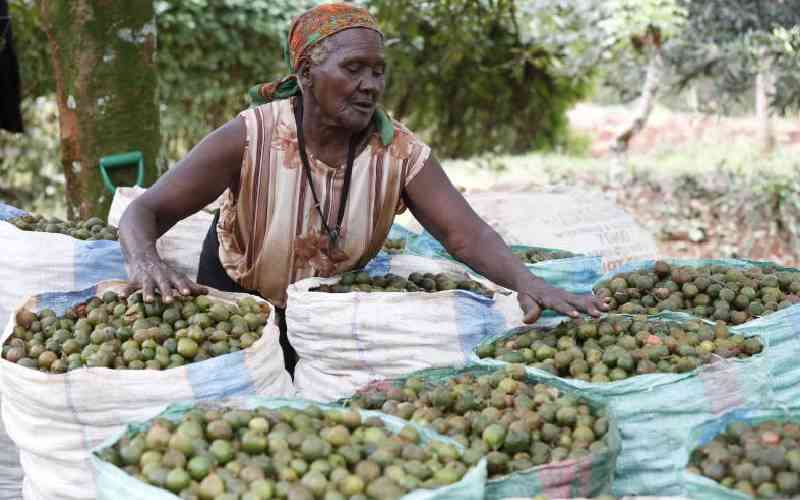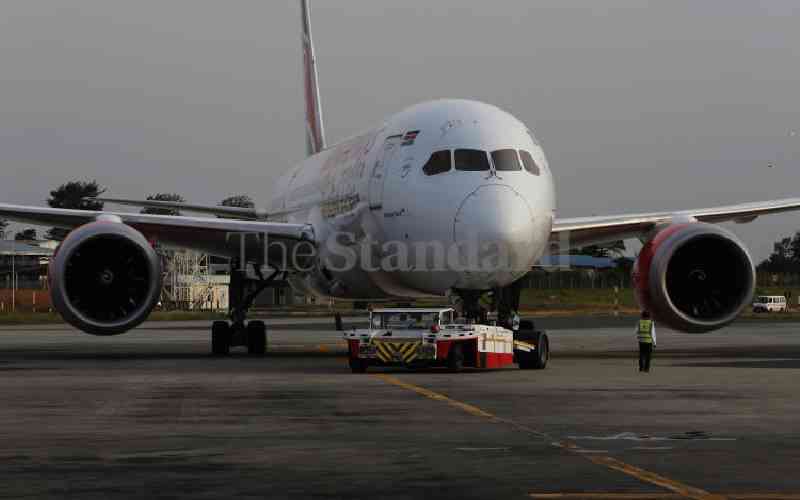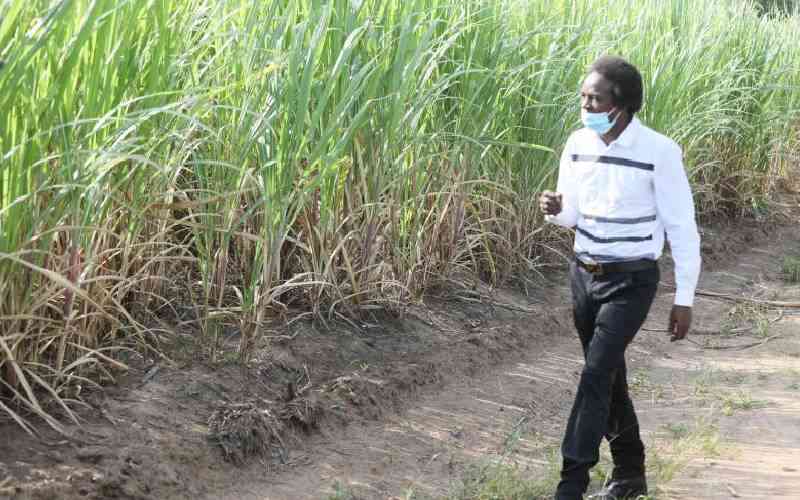Samuel Kinuthia knows how to make the most of technology. Using a technique called basin terracing, he has boosted his income at his farm in Murang'a county, and helped provide Kenyans as far away as Nairobi with better access to clean drinking water.
Kinuthia and a group of 300 farmers in Kiaruta village are turning hilly land into more productive farmland through basin terracing. It also reduces soil erosion, which can choke central Kenya's rivers and pollute drinking water.
On a sunny morning, Kinuthia and two employees are preparing a fresh strip of land to sow crops on his three-acre farm.
First they dig across a hilly patch to make it into a flat terrace. They then dig square holes to form basins on the strip, where Kinuthia will plant vegetables.
"I used to plant maize and beans but I could not harvest much," he said. "With basin terracing, I can plant fresh produce like tomatoes, kale and onions. Both the harvest and the resulting income improve because there is a ready market."
Fred Kihara, water fund manager in Kenya for The Nature Conservancy (TNC), an international environmental organisation, explained that the technology reduces the amount of soil being eroded away into rivers.
"It also increases the amount of water that is being retained in the soil," he added.
A 2015 study by TNC says the Upper Tana basin - which provides water to an estimated 9 million Kenyans - is a watershed under pressure.
About 65 percent of the farmers questioned by the group said the productivity of their land had declined even though they use more fertilisers than five years ago. Overall, 80 percent reported a decrease in rainfall in recent years.
From Kinuthia's farm in the Upper Tana basin, the view is of stretches of hilly terrain that have been stripped bare of trees. The red soil is easily blown away or eroded.
PROTECTING SOURCE WATER
Farming on hilly land has increased the amount of soil ending up in rivers that feed the country's largest water reservoir, the Ndakaini dam, in central Kenya.
In Nairobi alone, 85 percent of water - or 70 million cubic metres - is supplied by the dam, around 80 kilometres away, according to officials from the Nairobi City Water and Sewerage Company. More sediment turns the water cloudy, they say.
Soil runoff can include manure and fertiliser used on farms, which may pollute drinking water and make people sick, said Philip Muthui, the company's production manager.
He hopes that the use of basin terracing by farmers will reduce erosion into rivers, thus protecting Ndakaini water.
Currently, the cost of removing the sediment and treating water at Ndakaini ranges between six and seven Kenyan shillings ($0.06-$0.07) per cubic metre, which Muthui says is too high.
"Reducing sediment load into rivers has cut the cost of treating water by about three percent," he added.
Efforts to reduce erosion in the Upper Tana basin have been supported by the Nairobi Water Fund, a $10 million public-private partnership between TNC, the Nairobi City Water and Sewerage Company and the Kenyan government, among others.
"Water security is likely to pose a bigger challenge as climate change leads to less water in the dry season and heavier deluges in the rainy season," said Eddy Njoroge, the fund's president.
"This is compounded by population growth that reduces the amount of water available per head," he said, adding that the fund was set up to tackle these issues.
The project aims to improve water quality in the Tana basin, safeguard Nairobi's main water source and improve the incomes of thousands of people through sustainable land management, he said.
Kinuthia has been using basin terracing for just over a year. He is grateful it has opened up a new revenue stream for his family through fresh produce farming.
On a good day, for example, he can harvest 8kg of kale. A 5kg bundle of kale can fetch him 1,000 shillings ($10), while the rest is eaten at home.
When he was farming maize and beans, "the little that I harvested would end up being consumed by the family", leaving him with nothing to sell, he explained.
 The Standard Group Plc is a multi-media organization with investments in media
platforms spanning newspaper print operations, television, radio broadcasting,
digital and online services. The Standard Group is recognized as a leading
multi-media house in Kenya with a key influence in matters of national and
international interest.
The Standard Group Plc is a multi-media organization with investments in media
platforms spanning newspaper print operations, television, radio broadcasting,
digital and online services. The Standard Group is recognized as a leading
multi-media house in Kenya with a key influence in matters of national and
international interest.
 The Standard Group Plc is a multi-media organization with investments in media
platforms spanning newspaper print operations, television, radio broadcasting,
digital and online services. The Standard Group is recognized as a leading
multi-media house in Kenya with a key influence in matters of national and
international interest.
The Standard Group Plc is a multi-media organization with investments in media
platforms spanning newspaper print operations, television, radio broadcasting,
digital and online services. The Standard Group is recognized as a leading
multi-media house in Kenya with a key influence in matters of national and
international interest.









